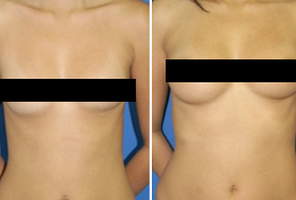A full head of hair not only provides a method of personal expression through unique hairstyling but also can protect the scalp from the damaging effects of the sun and provide thermal insulation in either extreme of climate.
A full head of hair not only provides a method of personal expression through unique hairstyling but also can protect the scalp from the damaging effects of the sun and provide thermal insulation in either extreme of climate. Throughout history, people have sought peculiar ways to restore the ravages of hair loss from camel excrement to stump water, as recorded in the ancient papyri dated 5000 years ago.
Surgical hair restoration began with the imaginative efforts of the pioneering Prussian surgeon and scientist, Johann Dieffenbach, in the early nineteenth century. His love for tedious and technical pursuits led him to explore the regenerative capacity of transplanted hair and feathers that he would cohesively summarize in his doctoral thesis, Nona de Regeneratione et de Transplantatione. The modern era of hair transplantation began with the efforts of Okuda in 1939 and Tamura in 1943 who practiced in Japan where they replanted culturally shameful hair loss in the pubic region, and Fujita who worked to restore barren eyebrows a decade later. The most celebrated pioneer, and rightfully so, of modern hair restoration is accorded to Norman Orentreich in New York who transplanted punch grafts from the back of the scalp to the region of frontal hair loss in 1959. Although his method is synonymous with unsightly “plugsâ€, the philosophy behind his approach underscores how every hair-transplant surgeon operates today, namely that hair not genetically programmed for loss (in the back and sides of the head) will not fall out when transplanted to areas that are prone to hair loss (front and middle regions of the head).
The past two decades have witnessed a tremendous evolution, if not revolution, in hair restoration techniques, and the corn-row plugs that were prevalent in the past are thankfully no longer widely practiced. The use of much smaller grafts in the early 1980s provided the means by which natural results could be attained, albeit at the sacrifice of adequate hair density. Headington’s seminal thesis described that hair does not grow singly, as previously thought, but in discrete bundles of 1 to 4 hairs, which he termed “follicular unitsâ€. Follicular-unit transfer has yielded superior density over single hair grafts while maintaining a natural result. However, follicular units ultimately still provide a less than adequate result for optimal hair density. At the Lam Institute for Hair Restoration, we have now moved beyond the follicular-unit graft to employ multiple sized grafts that facilitate greater hair density without compromising the naturalness of the result. With this targeted approach, we can address the full spectrum of hair loss from early frontal loss along the hairline to more complete baldness effectively, affordably, and quickly. We have come a long way over the past 50 years to arrive at a modern, state-of-the-art strategy to achieve a natural, undetectable, yet dense hair restoration.
For more information about the life of Johann Dieffenbach, or Dr. Lam’s article on him please visit History of Hair Restoration.
Â

